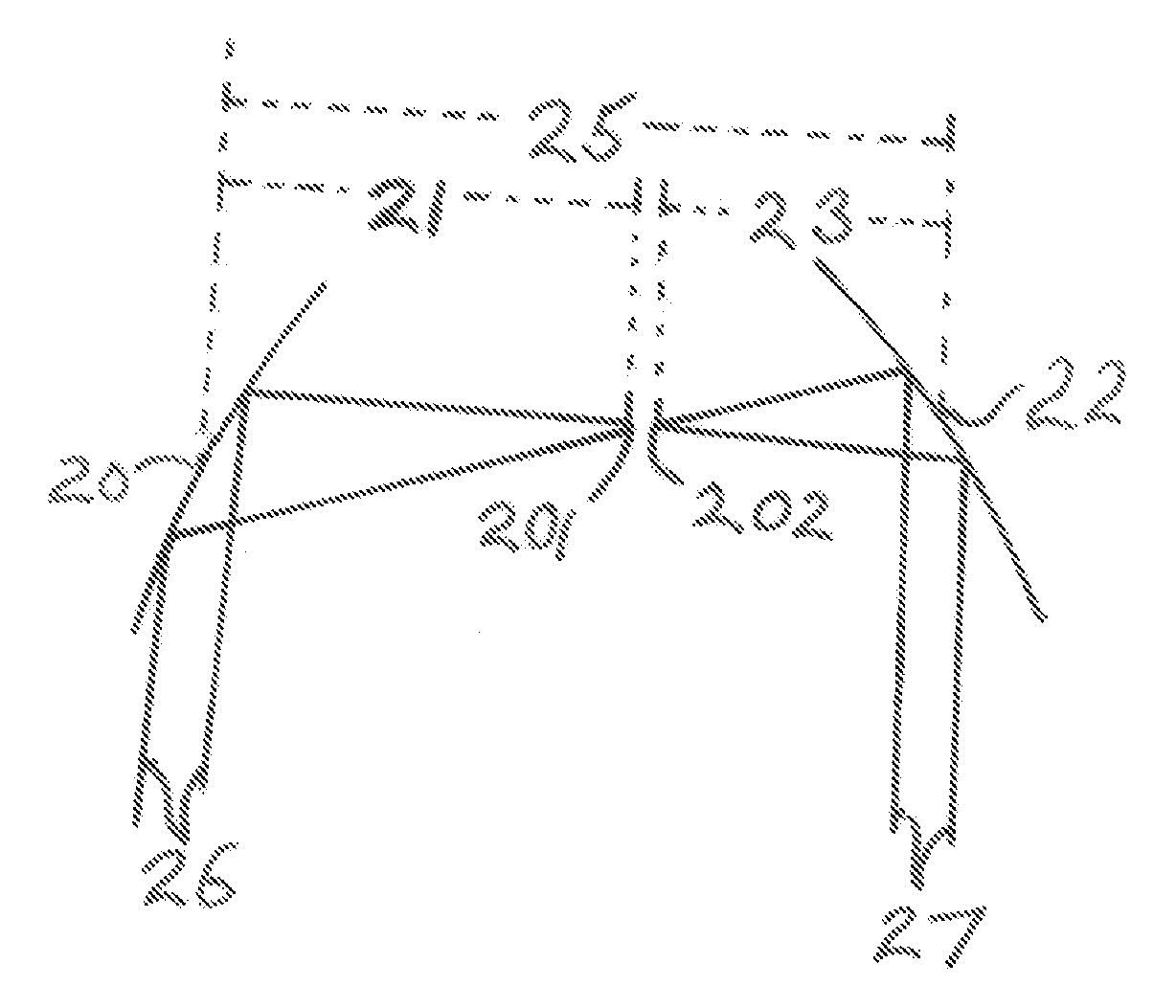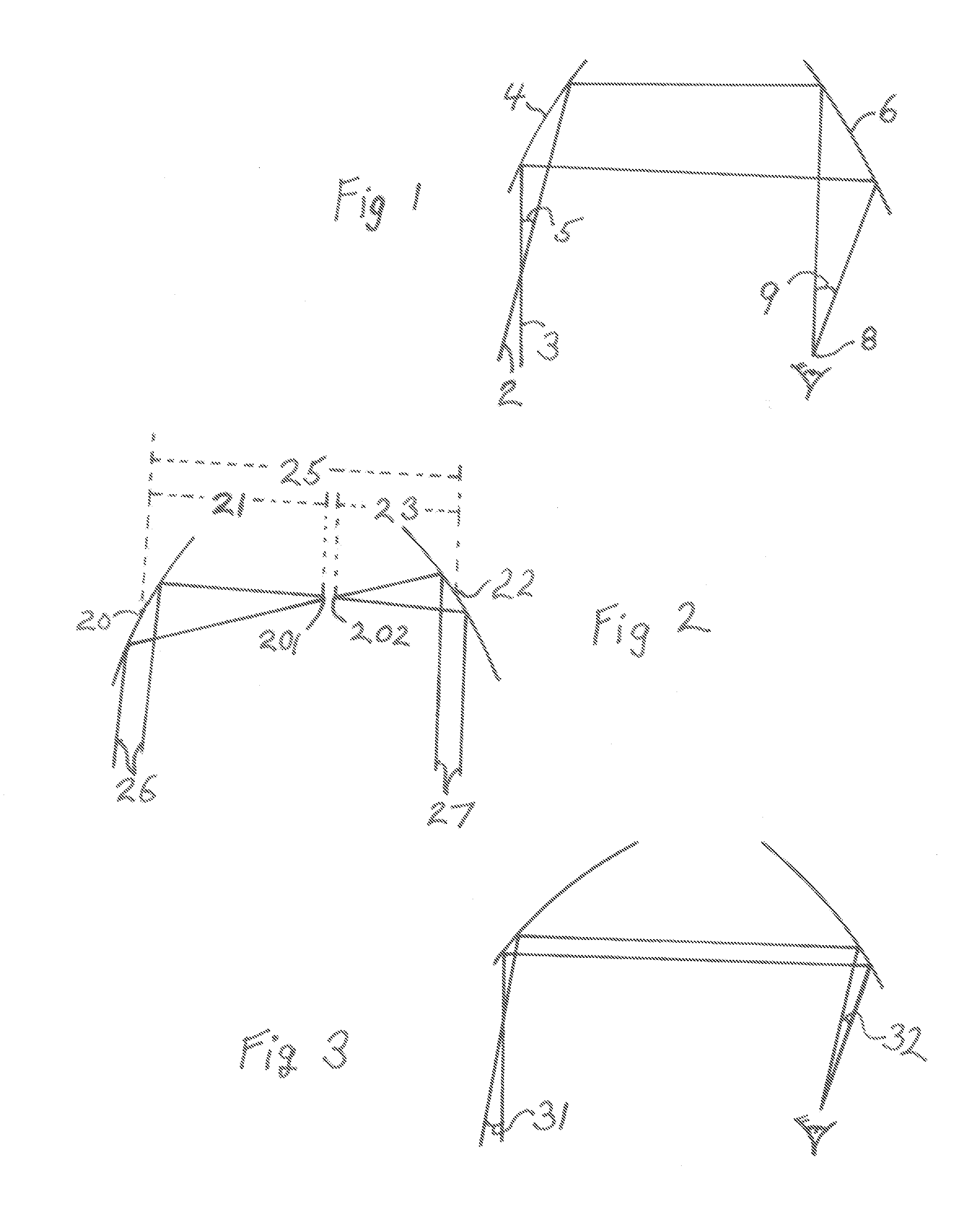Optical device with two cylindrically symmetric mirrors
a cylindrical symmetric mirror and optical device technology, applied in the field of optical devices, can solve the problems of inability to make sudden changes of direction, inconvenient viewing angle, and inability to observe the direction in a continuous manner, and achieve the effect of not inducing and limiting astigmatism
- Summary
- Abstract
- Description
- Claims
- Application Information
AI Technical Summary
Benefits of technology
Problems solved by technology
Method used
Image
Examples
Embodiment Construction
[0013]As discussed, this invention involves an apparatus suitable for viewing a rearward image using at least two mirrors, 1) each of the two having cylindrical symmetry and 2) having a substantially common plane of symmetry. The mirrors are further configured to provide in combination 1) an astigmatism of less than 0.0035, 2) an observable object field of at least 20 degrees, indeed even at least 25 degrees, and 3) a magnification over this field of view that has a ratio of local magnifications (a ratio between A) magnifications far from, relative to B) those close to the contemplated viewer's position) of less than 0.9. In this context, a mirror has cylindrical symmetry if there exists an imaginary plane (denominated the plane of symmetry) that has specific properties. In particular a plane is a plane of symmetry if the intersection of the plane of symmetry (which subsumes planes parallel to this plane) produces curves of intersection with the light-incident surface of the mirror ...
PUM
| Property | Measurement | Unit |
|---|---|---|
| viewing angle | aaaaa | aaaaa |
| angle | aaaaa | aaaaa |
| angle | aaaaa | aaaaa |
Abstract
Description
Claims
Application Information
 Login to View More
Login to View More - R&D
- Intellectual Property
- Life Sciences
- Materials
- Tech Scout
- Unparalleled Data Quality
- Higher Quality Content
- 60% Fewer Hallucinations
Browse by: Latest US Patents, China's latest patents, Technical Efficacy Thesaurus, Application Domain, Technology Topic, Popular Technical Reports.
© 2025 PatSnap. All rights reserved.Legal|Privacy policy|Modern Slavery Act Transparency Statement|Sitemap|About US| Contact US: help@patsnap.com



